24 Hours of Lemons
We’d just strapped Andrew into the race truck in the hot pits and were walking back to our paddock when we heard a loud BANG and saw a cloud of dirt. Somebody had hit the wall, seemingly hard. Our curiosity turned to shock and confusion when we looked and found it was Andrew who was facing the wrong way, off the racing surface, the truck minus one wheel.
Fortunately, the impact sounded worse than it was, and Andrew was fine. We were in hour 5 of a true 24-hour race at High Plains Raceway in Colorado, so our attention quickly turned to a new challenge: could we get our 1974 Chevy Luv back on the track, and how long would it take?
The four of us driving, plus the three of us crewing, rapidly set to disassembling the broken corner and tracking down spare parts. Although it initially looked as though the wheel had left the hub, in fact the entire front-right hub had left the truck. A loose nut led to a ball-joint failure, and once that let go the hub and wheel went together off into the prairie.
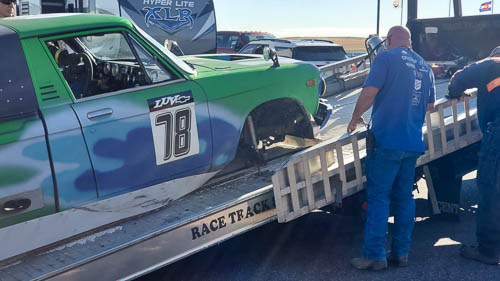
The Luv coming in on the hook after the incident. Notice the lack of a right front wheel. (Photo: Sean)
I had been driving the truck for the hour-long stint before Andrew, and I must admit I was quite relieved the mechanical failure hadn’t happened with me behind the wheel. Not out of any safety concern — my fire suit, helmet, gloves and so on worked well with the belts, roll cage, and other safety gear in the truck to mitigate that risk. Rather, I was glad I wasn’t the one to crash the truck because, frankly, it wasn’t my vehicle. It was, however, Andrew’s Luv, co-owned with his brother Aaron (who was also driving) and their father Mark (who was crewing).
I’d gotten connected with the Nebraska-based Pullman family team via a post on the 24 Hours of Lemons forums. I was looking for a drive; they were looking to fill a seat. We got along swimmingly, and two months after the initial overture we were all at the track together. Along the way, we’d also picked up my friend Will as the fourth driver, plus Sean and my friend Mike to crew.
All of us were focused on fixing the truck. That was difficult, because although the drivetrain had been replaced with a V6 and 5-speed manual from a late-90s Chevy S10, the front suspension was more or less pure Luv.
The spare tie rod and ball joint that the Pullmans thought they brought were in fact not with them in Colorado. But wait! Didn’t somebody in western Nebraska on the Luv Facebook group mention they had the requisite spares? It was “only” a 400 mile round trip from the track. Unable to raise the man on the internet, Andrew and Aaron set out towards Nebraska regardless, confident in their ability to work things out before it would be time to rendezvous.
Meanwhile, back at the track, the other five of us on the team passed the time by getting the truck ready to accept the parts and watching the lights on the still-running cars come on as night fell.
High Plains is far enough from Denver that the Milky Way shines bright when there is no moon, and there are few lights illuminating the track-proper outside of the pit area. When the race cars circulate the track in the dark with their headlights lit, they look like they are zipping around the amongst the stars.
Cars in the field of about 60 entrants broke down constantly. Few were suspension failures; most were engines. The premise behind then series was to race $500 cars, so the minor miracles relied upon to get them on the track in the first place had a knack for disappearing like Cinderella’s charmed accoutrements. Still, it’s a resourceful bunch who engage in such an endeavor, and clever mechanical and electrical hacks often managed to breathe new life into erstwhile expired powertrains.
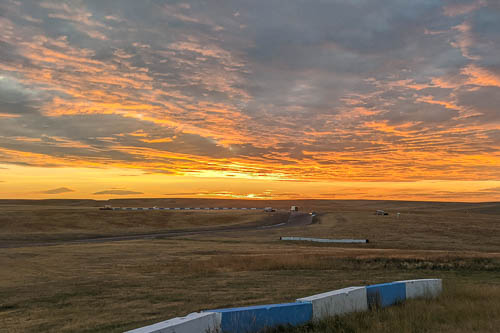
Sunset was spectacular the day before the race. Here’s the Luv in the turn 13-14-15 complex at High Plains.
The clock ticked towards midnight, then beyond. We waited for Andrew and Aaron’s return huddled by a space heater in the paddock.
Suddenly, out of the night, they appeared — and with the spares!
Ratchets clicked, hammers banged, and the Luv returned to the circuit at 1:00 a.m. We were down severely on laps, but 11 hours of the race remained. The truck ran better than ever — in part due to an ignition problem that we’d fixed during our downtime — and the team began crawling back up the standings.
Night grew lighter, and I took my next driving stint just as dawn broke. My first stint had been an anxious one, as I’d never driven the truck before my time in the race, not even for practice. The second stint was more relaxing. Yes, the tires were going, and a bad vibration on high-speed right turns led me to back off to try to preserve the machine, but overall my time behind the wheel flew by.
We swapped drivers several more times, and the Luv made it to the end of the race. Exhausted by the repair and wired due to the lack of sleep, we went home happy with dreams for next season.
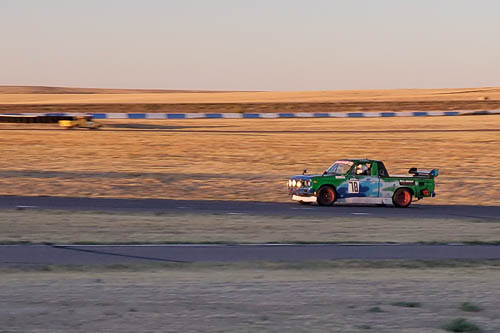
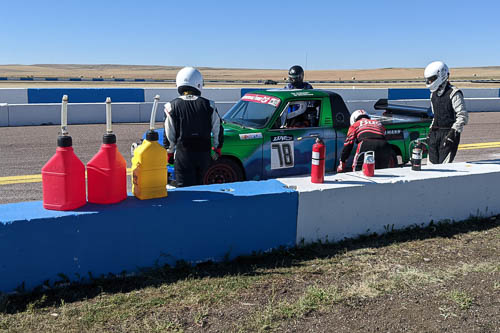
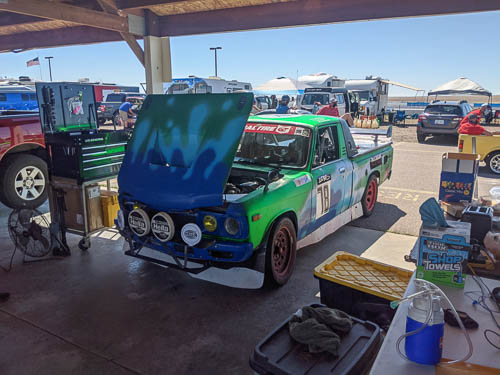
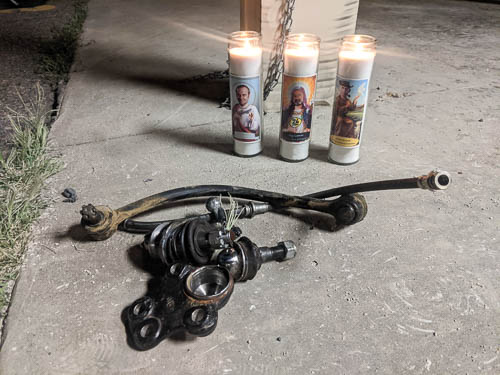
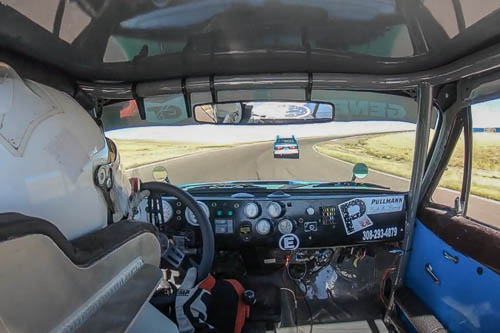
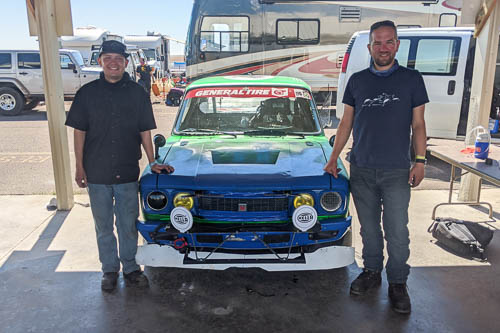
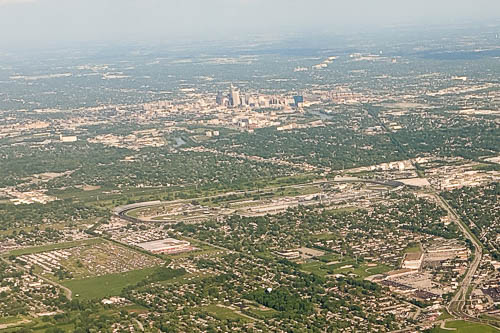

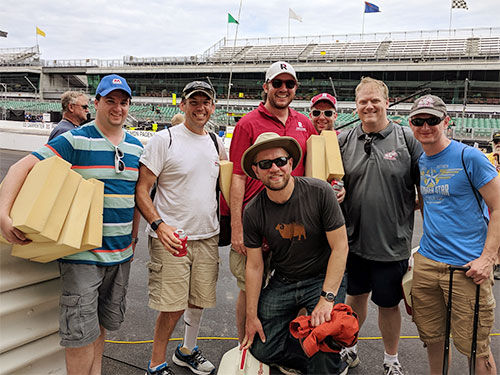
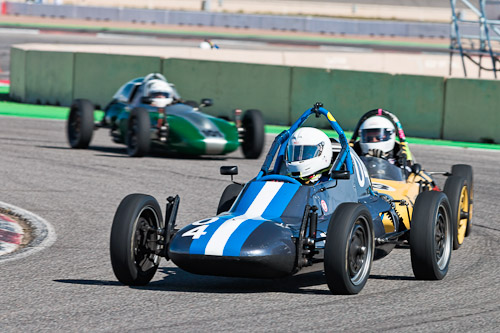





Recent Comments